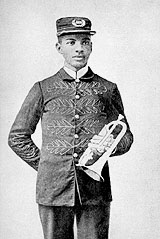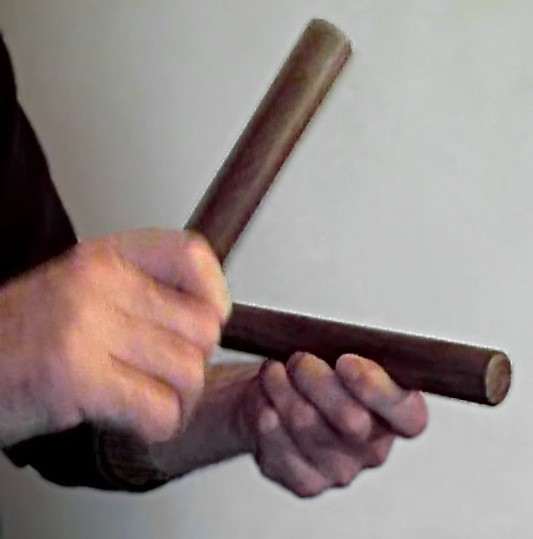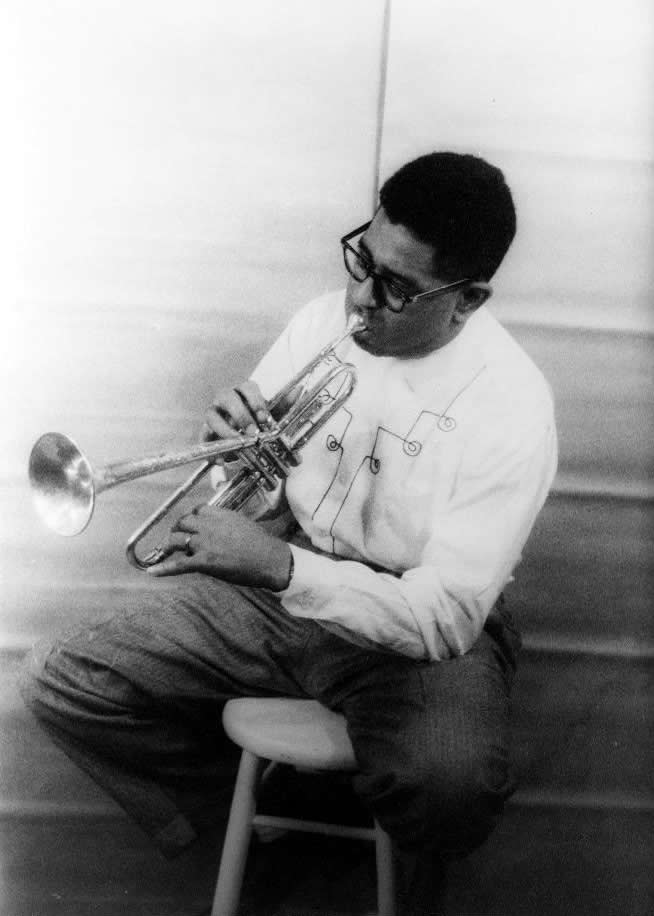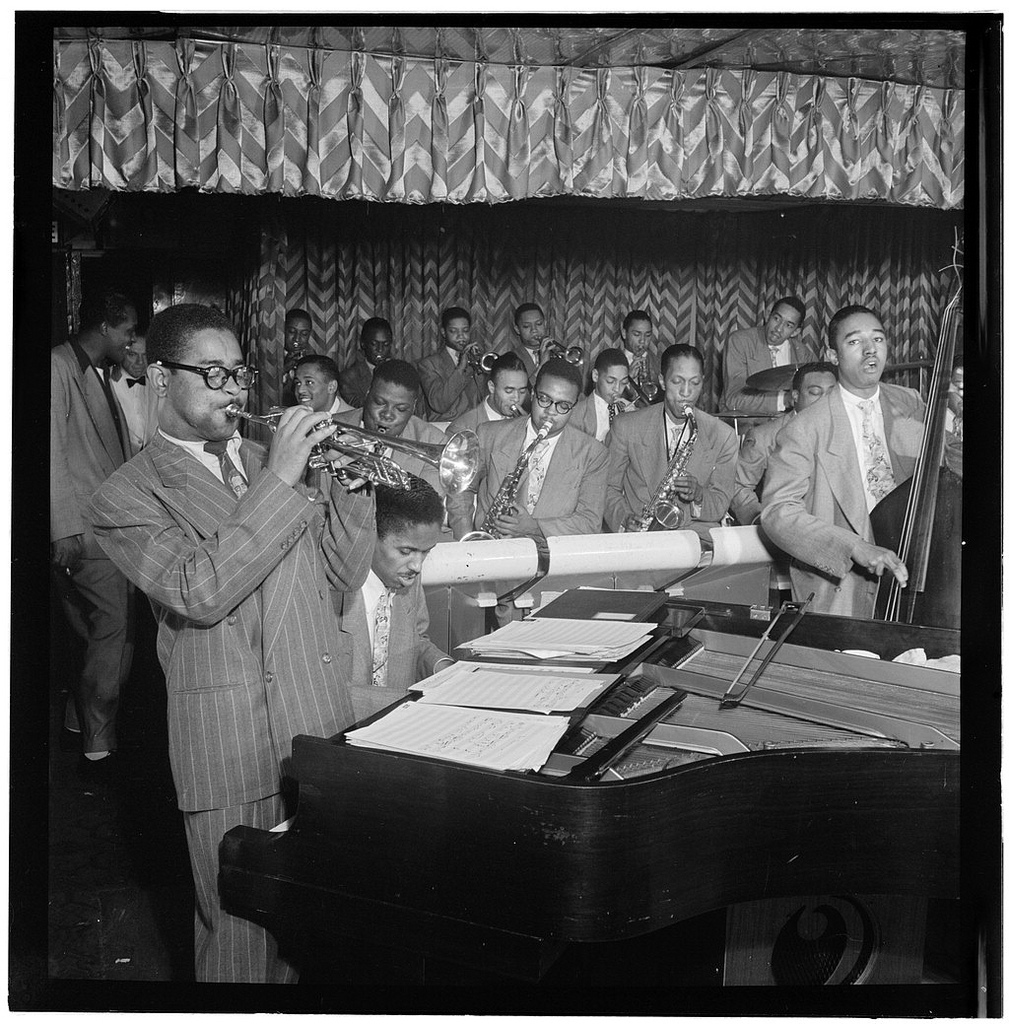|
Cuban Jazz
Afro-Cuban jazz is the earliest form of Latin jazz. It mixes Afro-Cuban clave-based rhythms with jazz harmonies and techniques of improvisation. Afro-Cuban music has deep roots in African ritual and rhythm.{{cite web, Cuba: Son and Afro-Cuban Music, https://worldmusic.net/blogs/guide-to-world-music/cuba-son-and-afro-cuban-music Afro-Cuban jazz emerged in the early 1940s with the Cuban musicians Mario Bauzá and Frank Grillo "Machito" in the band Machito and his Afro-Cubans in New York City. In 1947, the collaborations of bebop trumpeter Dizzy Gillespie and percussionist Chano Pozo brought Afro-Cuban rhythms and instruments, such as the tumbadora and the bongo, into the East Coast jazz scene. Early combinations of jazz with Cuban music, such as " Manteca" and "Mangó Mangüé", were commonly referred to as "Cubop" for Cuban bebop.{{cite book , last=Fernandez , first=Raul A. , title=From Afro-Cuban Rhythms to Latin Jazz , url=https://books.google.com/books?id=6WO7YevK_18C&pg=PA ... [...More Info...] [...Related Items...] OR: [Wikipedia] [Google] [Baidu] |
Son Cubano
Son cubano is a genre of music and dance that originated in the highlands of eastern Cuba during the late 19th century. It is a syncretic genre that blends elements of Spanish and African origin. Among its fundamental Hispanic components are the vocal style, lyrical metre and the primacy of the tres, derived from the Spanish guitar. On the other hand, its characteristic clave rhythm, call and response structure and percussion section ( bongo, maracas, etc.) are all rooted in traditions of Bantu origin. Around 1909 the son reached Havana, where the first recordings were made in 1917. This marked the start of its expansion throughout the island, becoming Cuba's most popular and influential genre. While early groups had between three and five members, during the 1920s the ''sexteto'' (sextet) became the genre's primary format. By the 1930s, many bands had incorporated a trumpet, becoming ''septetos'', and in the 1940s a larger type of ensemble featuring congas and piano became th ... [...More Info...] [...Related Items...] OR: [Wikipedia] [Google] [Baidu] |
Clave (rhythm)
The clave (; ) is a rhythmic pattern used as a tool for temporal organization in Cuban music. In Spanish, ''clave'' literally means key, clef, code, or keystone. It is present in a variety of genres such as Abakuá music, rumba, conga, son, mambo, salsa, songo, timba and Afro-Cuban jazz. The five-stroke clave pattern represents the structural core of many Cuban rhythms. The clave pattern originated in sub-Saharan African music traditions, where it serves essentially the same function as it does in Cuba. In ethnomusicology, clave is also known as a ''key pattern'', ''guide pattern'', ''phrasing referent'', ''timeline'', or ''asymmetrical timeline''. The clave pattern is also found in the African diaspora music of Haitian Vodou drumming, Afro-Brazilian music, African-American music, Louisiana Voodoo drumming, and Afro-Uruguayan music (candombe). The clave pattern (or hambone, as it is known in the United States) is used in North American popular music as a rhythmic motif or si ... [...More Info...] [...Related Items...] OR: [Wikipedia] [Google] [Baidu] |
Habanera (music)
''Contradanza'' (also called ''contradanza criolla'', ''danza'', ''danza criolla'', or ''habanera'') is the Spanish and Spanish-American version of the contradanse, which was an internationally popular style of music and dance in the 18th century, derived from the English country dance and adopted at the court of France. Contradanza was brought to America and there took on folkloric forms that still exist in Bolivia, Mexico, Venezuela, Colombia, Peru, Panama and Ecuador. In Cuba during the 19th century, it became an important genre, the first written music to be rhythmically based on an African rhythm pattern and the first Cuban dance to gain international popularity, the progenitor of danzón, mambo and cha-cha-cha, with a characteristic "habanera rhythm" and sung lyrics. Outside Cuba, the Cuban contradanza became known as the ''habanera'' – the dance of Havana – and that name was adopted in Cuba itself subsequent to its international popularity in the later 19th century, ... [...More Info...] [...Related Items...] OR: [Wikipedia] [Google] [Baidu] |
African-American Music
African-American music is an umbrella term covering a diverse range of music and musical genres largely developed by African Americans and their culture. Their origins are in musical forms that first came to be due to the condition of slavery that characterized the lives of African Americans prior to the American Civil War. Slavery and other impositions such as the Jim Crow laws shaped the world view of African Americans. Some of the globally most popular music types today, such as rock and roll, funk, jazz, rap, blues, hip-hop, and rhythm and blues were developed from the worldview of the African Americans who created and influenced these genres. It has been said that "every genre that is born from America has black roots." White slave owners sought to completely subjugate their slaves physically, mentally, and spiritually through brutal and demeaning acts. African Americans used music to counter this dehumanization. White Americans considered African Americans separate ... [...More Info...] [...Related Items...] OR: [Wikipedia] [Google] [Baidu] |
Songo Music
Songo is a genre of popular Cuban music, created by the group Los Van Van in the early 1970s. Songo incorporated rhythmic elements from folkloric rumba into popular dance music, and was a significant departure from the son montuno/mambo-based structure which had dominated popular music in Cuba since the 1940s. Blas Egües was the first drummer in Los Van Van, but it was the band's second drummer, José Luis Quintana "Changuito", who developed songo into the world-wide phenomenon it is today. Songo is the most famous of the post-Revolution Cuban rhythms, beginning with the mozambique, which drew from the deep well of Afro-Cuban folkloric rhythms (mainly rumba). During the 1970s, many Cuban bands created their own original rhythms: Los Van Van invented songo; Orquesta Ritmo Oriental—''nueva onda''; Orquesta Tipica Juventud—''bata cinco'', and Orquesta Revé named their invention—'' changüí'', after the "funky," folkloric proto-son music of the 19th century. Songo is a precurs ... [...More Info...] [...Related Items...] OR: [Wikipedia] [Google] [Baidu] |
Irakere
Irakere (faux-Yoruba for 'forest') is a Cuban band founded by pianist Chucho Valdés (son of Bebo Valdés) in 1973. They won the Grammy Award for Best Latin Recording in 1980 with their album ''Irakere''. Irakere was a seminal musical laboratory, where historic innovations in both Afro-Cuban jazz and Cuban popular dance music were created. The group used a wide array of percussion instruments like batá, abakuá and arará drums, chequerés, erikundis, maracas, claves, cencerros, bongó, tumbadoras (congas), and güiro. History "Jazz bands" began forming in Cuba as early as the 1920s. These bands often included both Cuban popular music and popular North American jazz, and show tunes in their repertoires. Despite this musical versatility, the movement of blending Afro-Cuban rhythms with jazz was not strong in Cuba itself for decades. As Leonardo Acosta observes: "Afro-Cuban jazz developed simultaneously in New York and Havana, with the difference that in Cuba it was a silent ... [...More Info...] [...Related Items...] OR: [Wikipedia] [Google] [Baidu] |
Kenny Dorham
McKinley Howard "Kenny" Dorham (August 30, 1924 – December 5, 1972) was an American jazz trumpeter, singer, and composer. Dorham's talent is frequently lauded by critics and other musicians, but he never received the kind of attention or public recognition from the jazz establishment that many of his peers did. For this reason, writer Gary Giddins said that Dorham's name has become "virtually synonymous with ''underrated''." Dorham composed the jazz standard "Blue Bossa", which first appeared on Joe Henderson's album ''Page One''. Biography Dorham was one of the most active bebop trumpeters. He played in the big bands of Lionel Hampton, Billy Eckstine, Dizzy Gillespie, and Mercer Ellington and the quintet of Charlie Parker. He joined Parker's band in December 1948. He was a charter member of the original cooperative The Jazz Messengers, Jazz Messengers. He also recorded as a sideman with Thelonious Monk and Sonny Rollins, and he replaced Clifford Brown in the Max Roach Quintet af ... [...More Info...] [...Related Items...] OR: [Wikipedia] [Google] [Baidu] |
Manteca (song)
"Manteca" is one of the earliest foundational tunes of Afro-Cuban jazz. Co-written by Dizzy Gillespie, Chano Pozo and Gil Fuller in 1947, it is among the most famous of Gillespie's recordings (along with the earlier " A Night in Tunisia") and is "one of the most important records ever made in the United States", according to Gary Giddins of ''The Village Voice''. "Manteca" is the first tune rhythmically based on the clave to become a jazz standard. History In 1947, Gillespie asked Mario Bauzá to recommend a Cuban percussionist for his big band. Bauzá suggested Pozo, a rough-living percussionist already famous in Cuba, and Gillespie hired him. They began to work Pozo's Cuban-style percussion into the band's arrangements. The band was touring in California when Pozo presented Gillespie with the idea for the tune. It featured a bridge of two eight-bar trumpet statements by Gillespie, percussion patterns played by Pozo, and horn lines from Gillespie's big band arranger Walter "Gil" ... [...More Info...] [...Related Items...] OR: [Wikipedia] [Google] [Baidu] |
Bongo Drum
Bongos ( es, bongó) are an Afro-Cuban percussion instrument consisting of a pair of small open bottomed hand drums of different sizes. They are struck with both hands, most commonly in an eight-stroke pattern called ''martillo'' (hammer). The larger drum is called a hembra (Spanish for female) and the smaller drum is called the macho (Spanish for male). They are mainly employed in the rhythm section of son cubano and salsa ensembles, often alongside other drums such as the larger congas and the stick-struck timbales. This brought bongos into our cultural vocabulary, from Beatniks to Mambo to the current revival of Cuban folkloric music. Bongo drummers (''bongoseros'') emerged as the only drummers of son cubano ensembles in eastern Cuba toward the end of the 19th century. It is believed that Bongos evolved from the Abakua Drum trio 'Bonko' and its lead drum 'Bonko Enmiwewos'. These drums are still a fundamental part of the Abakua Religion in Cuba. If joined with a wooden peck in ... [...More Info...] [...Related Items...] OR: [Wikipedia] [Google] [Baidu] |
Tumbadora
The conga, also known as tumbadora, is a tall, narrow, single-headed drum from Cuba. Congas are staved like barrels and classified into three types: quinto (lead drum, highest), tres dos or tres golpes (middle), and tumba or salidor (lowest). Congas were originally used in Afro-Cuban music genres such as conga (hence their name) and rumba, where each drummer would play a single drum. Following numerous innovations in conga drumming and construction during the mid-20th century, as well as its internationalization, it became increasingly common for drummers to play two or three drums. Congas have become a popular instrument in many forms of Latin music such as son (when played by conjuntos), descarga, Afro-Cuban jazz, salsa, songo, merengue and Latin rock. Although the exact origins of the conga drum are unknown, researchers agree that it was developed by Cuban people of African descent during the late 19th century or early 20th century. Its direct ancestors are thought to ... [...More Info...] [...Related Items...] OR: [Wikipedia] [Google] [Baidu] |
Chano Pozo
Luciano Pozo González (January 7, 1915 – December 3, 1948), known professionally as Chano Pozo, was a Cuban jazz percussionist, singer, dancer, and composer. Despite only living to age 33, he played a major role in the founding of Latin jazz. He co-wrote some of Dizzy Gillespie's Latin-flavored compositions, such as " Manteca" and "Tin Tin Deo", and was the first Latin percussionist in Gillespie's band. Early life Luciano "Chano" Pozo González was born in Havana to Cecelio González and Carnación Pozo. Chano grew up with three sisters and a brother, as well as his older half brother, Félix Chappottín, who would later become one of the great Cuban '' soneros''. The family struggled with poverty throughout his youth. His mother died when Chano was eleven, and Cecelio took his family to live with his long-time mistress, Natalia, who was Felix's mother. Chano showed an early interest in playing drums, and performed ably in Afro-Cuban religious ceremonies in which drumming w ... [...More Info...] [...Related Items...] OR: [Wikipedia] [Google] [Baidu] |
Dizzy Gillespie
John Birks "Dizzy" Gillespie (; October 21, 1917 – January 6, 1993) was an American jazz trumpeter, bandleader, composer, educator and singer. He was a trumpet virtuoso and improviser, building on the virtuosic style of Roy Eldridge but adding layers of harmonic and rhythmic complexity previously unheard in jazz. His combination of musicianship, showmanship, and wit made him a leading popularizer of the new music called bebop. His beret and horn-rimmed spectacles, scat singing, bent horn, pouched cheeks, and light-hearted personality provided one of bebop's most prominent symbols. In the 1940s, Gillespie, with Charlie Parker, became a major figure in the development of bebop and modern jazz. He taught and influenced many other musicians, including trumpeters Miles Davis, Jon Faddis, Fats Navarro, Clifford Brown, Arturo Sandoval, Lee Morgan, Chuck Mangione, and balladeer Johnny Hartman. He pioneered Afro-Cuban jazz and won several Grammy Awards. Scott Yanow wrote, "Dizzy ... [...More Info...] [...Related Items...] OR: [Wikipedia] [Google] [Baidu] |








